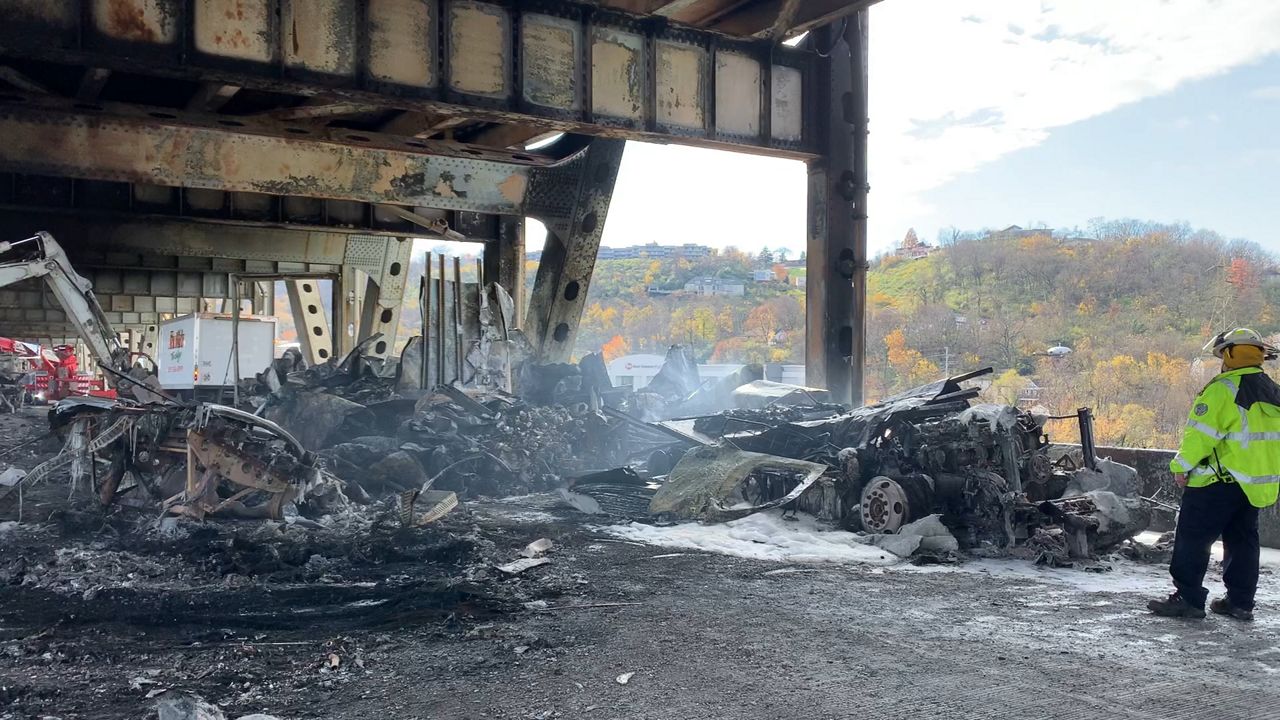COVINGTON, Ky. — Covington’s Board of Commissioners passed a resolution on Tuesday calling for stricter enforcement of a 2013 regulation banning hazardous materials (hazmat) from the Brent Spence Bridge.
What You Need To Know
- Covington officials are calling for stricter enforcement of a hazardous materials ban on the Brent Spence Bridge
- A mid-November collision caused an emergency closure of the bridge — one truck involved was carrying flammable, hazardous materials
- Officials say the ban is neither widely known nor followed correctly, as signs on the bridge seem to contradict it
- The Brent Spence Bridge is scheduled to reopen Dec. 23
Officials pointed to the recent collision on the bridge that led to its closure — crippling traffic and infrastructure in the surrounding areas — as a "wake-up call."
On Nov. 11, an early-morning crash between two tractor-trailers caused significant damage to the bridge's concrete and steel structure. An important thing to note is that one of the tractor-trailers involved in the wreck were carrying a common hazmat known as lye — when combined with diesel fuel, the lye created an almost instantaneous fireball that burned on the bridge for hours.
The 2013 regulation classifies the Brent Spence Bridge as a "Restricted Hazardous Material" route, banning vehicles from carrying hazardous materials across the bridge. Covington officials said the ban "appears to be neither widely known nor routinely followed."
Tuesday's resolution calls for better signage, the robust redirection of trucks carrying hazardous materials, and strict enforcement of the ban.
City officials said in a statement that November's crash "established beyond a reasonable doubt the risk associated with hazardous materials on the Brent Spence Bridge," adding that each day the ban is not enforced creates "heightened risk" to Covington residents and the flow of commerce in the region.
Repairs began shortly after the wreck and are currently ongoing — KYTC Secretary Jim Gray said crews are on track to finish construction and reopen the bridge on Dec. 23.
While state officials said the amount of the chemical carried by the truck wasn’t big enough to trigger the ban, Covington officials said they’re more focused on preventing future catastrophes.
“It could have been a whole lot worse,” Mayor Joe Meyer said. “We were very lucky, so the question becomes, very simply, why take the risk?”
The bridge carries both Interstates 75 and 71 across the Ohio River between Covington and Cincinnati, with the joint interstate splitting at the north end of the bridge.
An existing sign in Kentucky tells truckers carrying hazardous materials to avoid I-71, which runs through the Lytle Tunnel. Another sign directs tells hazmat carriers to use I-75, in apparent violation of the ban.
The shutdown of the bridge has created severe gridlock in Covington as interstate drivers — including tractor trailers — heading north into Ohio have sought to avoid the lengthy I-275 detour by using Covington streets that are designated as state highways, including Main Street through the business district of MainStrasse Village.
“It has been just an extraordinarily disruptive and difficult circumstance for the people and businesses of our community,” Meyer said.
Related Stories
- Construction Crews "Rounding Third" on Brent Spence Bridge Repairs
- In Focus: Rep. Sal Santoro on the Need to Fund Bridge and Road Repair Projects During Upcoming 2021 General Assembly Session
- KYTC Secretary Assures "No Cutting Corners" While Repairing Brent Spence Bridge
- Repairs Could Take Weeks, Perhaps A Month Before Brent Spence Bridge Reopens
Bryce Shreve is a digital producer with Spectrum News 1 KY. He is a recent graduate of Indiana University Southeast and joined the staff in November, 2020.



